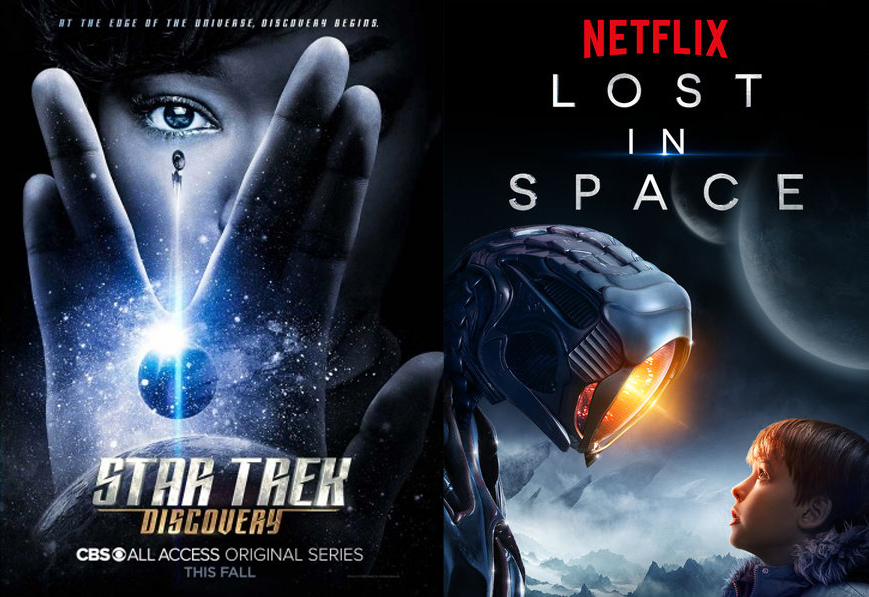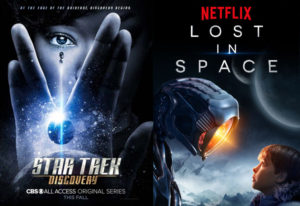 DANGER, WILL ROBINSON! LOST IN SPOILERS!
DANGER, WILL ROBINSON! LOST IN SPOILERS!
 In Part 1, I looked at some of the striking similarities between the two franchises LOST IN SPACE and STAR TREK. And then I shared how my seven-year-old son and I absolutely LOVED the first season of the new Netflix reboot of Lost in Space, while I personally have been mostly disappointed with the new Star Trek: Discovery on CBS All Access (which I don’t let my son watch).
In Part 1, I looked at some of the striking similarities between the two franchises LOST IN SPACE and STAR TREK. And then I shared how my seven-year-old son and I absolutely LOVED the first season of the new Netflix reboot of Lost in Space, while I personally have been mostly disappointed with the new Star Trek: Discovery on CBS All Access (which I don’t let my son watch).
Yesterday, I provided an overview of why Jayden and I enjoyed LiS so much. It made us cheer. We rooted for the characters and wanted to see them get out of trouble and win. On the other hand, during the first season of Star Trek: Discovery, I found myself caring very little about any of the crew or nearly all of the other characters on that show.
But enough with the generalities! It’s time to provide some specifics of what I think LiS is doing right that Discovery is failing to do. So let’s dive right in…
Continue reading “Why can’t STAR TREK to be more like LOST IN SPACE?! (review editorial, part 2)”

